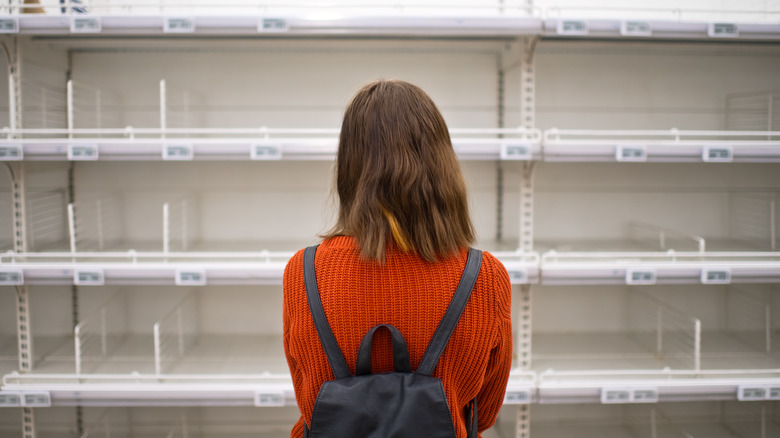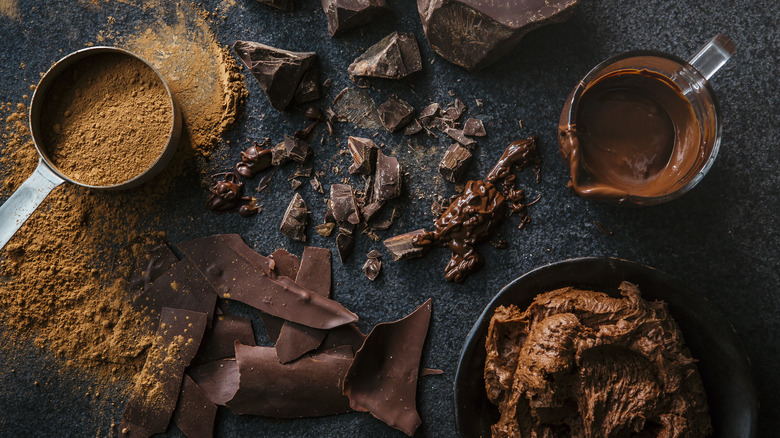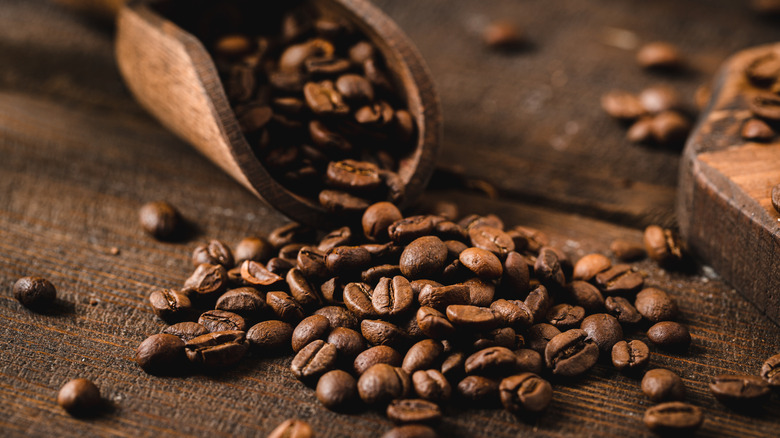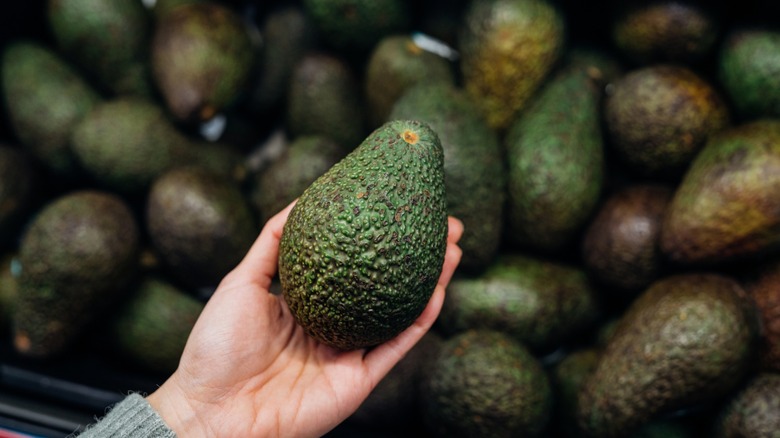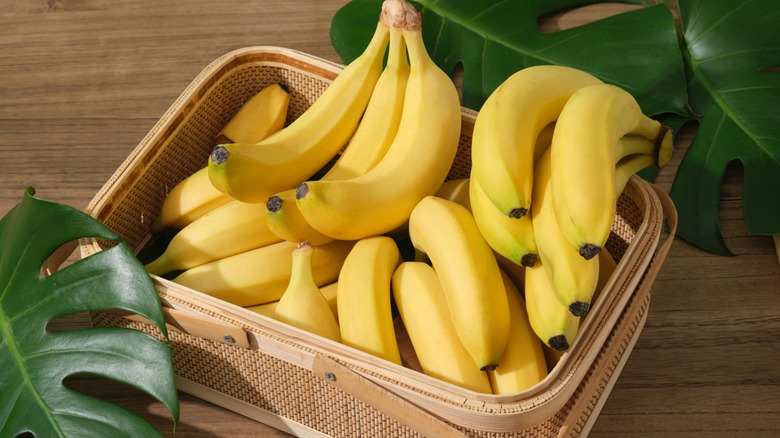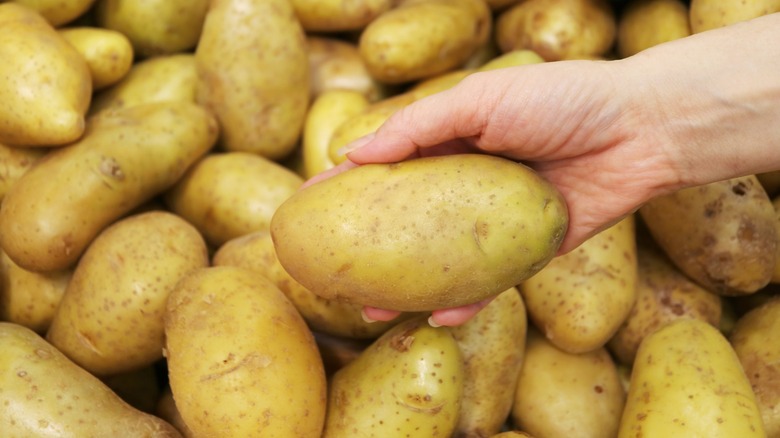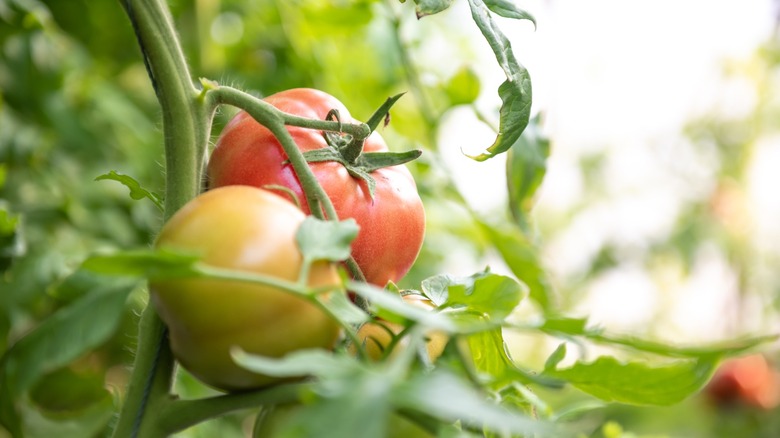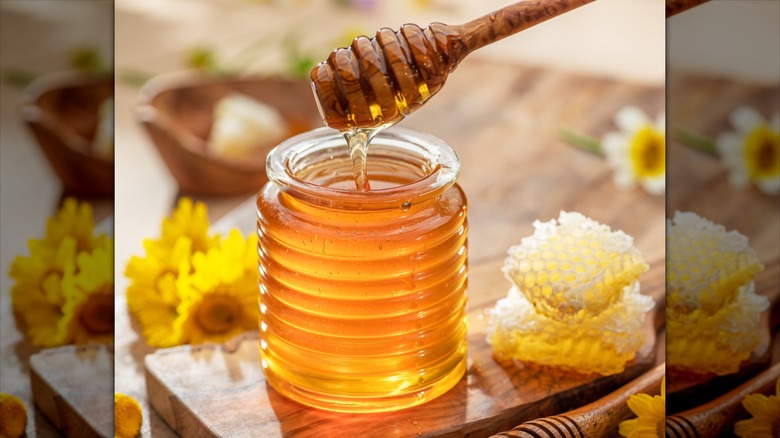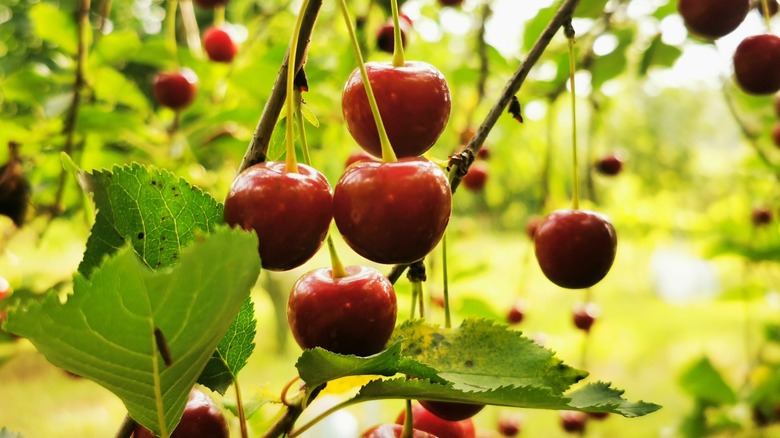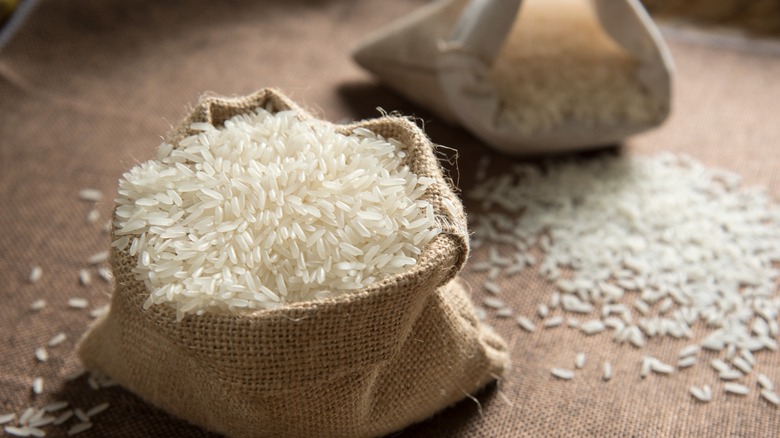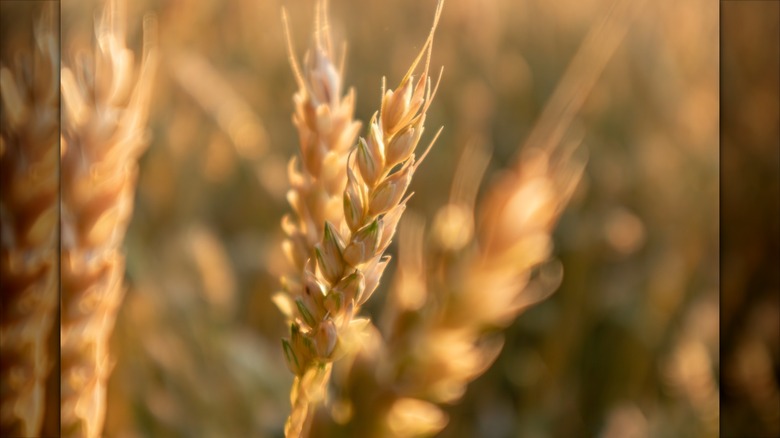13 Foods That Could Disappear Because Of Climate Change
You stumble into the kitchen, desperate for a morning jolt of joe, only to find the coffee beans are gone. Your backup plan is a banana or maybe a slice of avocado toast. Nope, the ingredients for those are missing, too. And that chocolate you keep hidden for emergencies, stashed way up on the top shelf the kids can't reach? It's out of your reach, too (literally). It sounds like a foodie nightmare, but it could very easily become a reality. This is just one possible future if climate change keeps wrecking the delicate systems upon which our favorite foods depend.
We already know the planet is heating up, but it is not just about polar bears or rising sea levels. It is about what ends up on your plate. Plenty of the foods we consume on a daily basis require very specific conditions to grow. They are picky eaters, weather divas, and timing freaks. Throw in extreme heat waves, unpredictable rain, or disappearing winters, and suddenly your pantry will start to look a lot emptier.
Researchers and news outlets have been sounding the alarm for some time, each adding to the list of endangered eats (and drinks). In other words, climate change is not just altering the planet. It is coming for your brunch menu, your dessert tray, and even your favorite healthy snacks. Here are 13 foods scientists say could disappear — or at least get a whole lot scarcer (and pricier).
Chocolate
Chocolate is delicious, but the cacao plant that makes it possible is quite the high-maintenance queen. It flourishes in hot, humid, shady areas with steady rainfall. West Africa produces most of the world's cacao, but rising temperatures and unusual rainfall patterns are making that climate less reliable. When cacao trees are stressed, they flower less, set fewer pods, and are more vulnerable to pests and disease. In plain English, this means fewer cacao beans and less chocolate.
Cacao's need for stable temperatures, shade, and moisture makes it a particularly fragile crop. Farmers are being pushed into higher altitudes to find cooler land, but there is only so much space on the hills. Moving into those areas can also mean cutting down forests, which only makes climate problems worse. The result is a shrinking chocolate belt and rising prices. Reports show that climate change is already forcing farmers into a corner.
So, not to alarm you, but the future of that comforting cup of warm hot chocolate is, well, not looking too hot. Without big investments in more resilient plants or smarter farming techniques, chocolate might get bumped from the category of everyday indulgence to occasional luxury.
Coffee
Coffee is the ultimate morning MVP, but the plant behind that valuable player is in trouble. Coffee arabica, the plant that makes up most of what we drink to start our day, likes stable temperatures and just the right amount of rain. Climate change is pushing those sweet spots higher up the mountains, squeezing farmers into less space. Even worse, the warmer, wetter conditions are like a party invitation for pests and disease. Coffee leaf rust, a nasty fungus, has already wreaked havoc on farms in Central America.
It gets worse. Coffee plants rely on bees for pollination, and bees are stressed, too. Habitat loss, pesticides, and climate chaos are shrinking their populations. Fewer bees means less pollination, which means smaller harvests, which in turn leads to less coffee.
Industry experts warn that the industry faces huge adaptation challenges. Farmers are doing what they can to adapt in the face of chaotic weather. Meanwhile, global demand is not slowing down, which means prices could spike. Several expert analyses even predict a serious coffee price surge in the not-so-distant future. So, if your daily latte feels pricey now, brace yourself. Climate change could make your caffeine habit even more costly.
Avocados
Avocados are like the Beyoncé of brunch, and just like all good divas, they require certain conditions to thrive. The fruit's trees (yes, avocados are a fruit, not a vegetable) are water hogs, and they hate unpredictable weather. Mexico is ground zero for avocado production, and farmers there are already seeing the warning signs. It has been reported that the growing area for avocados in Mexico could shrink sharply by 2050 as heat, drought, and rainfall shifts make growing conditions less reliable.
The other big problem is genetic diversity. Wild avocado varieties — which carry traits that could help crops adapt to stress — are under threat. Habitat loss and climate change are pushing many toward extinction. Experts have flagged this as a major problem, since without wild relatives, breeders cannot create more resilient versions of the fruit.
So, what does this have to do with you? As farmers may struggle to keep up with global demand, water resources may be stretched even thinner, and that already bougie slice of avocado toast at your local brunch hotspot could soon come with an even dearer price tag — if it's even still on the menu.
Bananas
Bananas may be among the world's most popular fruits, but they are living on borrowed time. This tropical fruit's plants like steady warmth and high moisture, but climate change is pushing conditions to extremes. Droughts starve banana plants of water, while typhoons flatten entire banana plantations. The biggest threat, though, is relentless heat. While bananas are natural sun worshippers, they have their limits. Too much extreme heat and banana yields plummet.
The whole problem gets scarier when you realize how dependent we are on just one type of banana, known as the Cavendish banana. While there are over 1,000 varieties of bananas in the world, this is the most common variety you will find in grocery stores, and it is not particularly resilient. Climate extremes are already disrupting production. Meanwhile, a 2025 report from Christian Aid claimed that around 60% of land used to grow bananas in Latin America and the Caribbean may be unsuitable by 2080.
Bananas are cheap and available almost everywhere now, but if conditions keep worsening, the fruit could get more expensive or even scarce. The idea of a banana shortage sounds absurd, but so did that time we all thought we would run out of toilet paper.
Maple syrup
Nostalgia hits hard at that first sweet whiff of buttered batter on the griddle, harking back to fluffy, sky-high pancake stacks on sleepy Saturday mornings. Now imagine that same stack without a generous drizzle of maple syrup. That's just a hypothetical, for now. But the golden, delicious maple syrup that perfects our favorite breakfasts comes from a process far more intricate — and at risk — than most realize.
The sap needed for maple syrup only flows when daytime temperatures rise above freezing and nights drop below it. This freeze-thaw cycle builds pressure inside sugar maples, pushing out sap when tapped. However, warmer winters mean fewer cold nights, which means less sap. No sap, no syrup.
Maple syrup season is already shrinking. Canada's iconic maple industry is under stress as winters warm, and the window for tapping season shrinks. In 2023, Canada's maple syrup reserve hit its lowest numbers in 16 years. Farmers are adapting with new techniques to maximize yields. Remember that nightmare scenario we concocted just a moment ago of pancakes without real maple syrup? Well, that may be the future if availability worsens.
Potatoes
French fries. Mashed potatoes. Potato chips. All the very best comfort foods start with one very special ingredient: sir spud. Potatoes may indeed be comfort food royalty, but this humble tuber is surprisingly fragile when the weather gets weird. Too much rain and fields flood, potentially depriving potatoes of oxygen and rotting roots underground. Too little rain and the plants wither. Heat waves are just as bad, stressing plants and reducing yields.
Potato harvests in Europe have already been hit hard by unpredictable weather. Meanwhile, the International Food Policy Research Institute estimates that global potato production will decrease by 9% by 2050, while potato farmers in Northern Europe may no longer experience growing seasons (via National Geographic). Farmers can try switching varieties or planting at different times, but the risks keep growing. The bottom line: Climate change is messing with your fries, and that is a sentence nobody wants to hear.
Tomatoes
It's the fruit behind your favorite ketchup, the star of a perfect pizza, and the hero of a delicious BLT. But one of the world's most versatile fruits is surprisingly vulnerable, and climate change is turning up the heat on our supply. Tomatoes may be the secret behind the sidekick dipping sauce that makes your fries sing, but this global staple has a major Achilles heel. It's water, and tomatoes need plenty of it. They also need steady warmth, but not too much heat.
Rising temperatures and droughts are already putting pressure on major producers like California and Italy. A study published by Nature Food predicts that yields of processing tomatoes in the U.S., Italy, and China (which are together responsible for 65% of the world's production) could drop by 6% by 2050, with hotter summers and water shortages playing major roles.
The real tragedy is the loss of a flavor we've taken for granted. Some areas have already felt the pinch in recent years. For example, in 2023, the U.K. experienced a tomato shortage due to inclement weather in Europe and Africa.
Wine
If you love your wine, you might want to pay close attention. It turns out that the delicate climate dance required to produce those perfect grapes for your preferred pour is seriously feeling the heat, forcing beloved wine regions to rethink their next steps.
So, wine drinkers, brace yourselves. Grapes are very picky about climate, with their sugar-acid balance depending on precise temperatures. Too hot, and grapes ripen too fast. Too cold and they do not ripen at all. Climate change is shifting those zones, pushing vineyards out of traditional regions. According to a literature review published by Nature Reviews Earth & Environment, as much as 90% of the world's wine-producing regions may become unviable by the end of the century, depending on how much the planet warms.
Europe is already feeling the heat in the face of unpredictable weather, water shortages, and rising production costs. On the flip side, the U.K. is cutting in to become a new contender in the wine game as climate change actually improves its ability to grow grapes. That means future glasses of red may taste a little different, Champagne might lose its sparkle, and new wine regions may rise in unexpected places. Wine lovers may adapt, but centuries-old traditions are at stake.
Honey
Our beloved bees — those tiny, fuzzy workers that play a key role in producing a certain sticky-sweet treat, plus the food chain at large — are facing a tough time. Honey depends on bees, and bees are in trouble. Heat waves, droughts, habitat loss, and pesticide use are all stressing bee populations. Climate change is impacting the timing of flower blooms, leaving bees without food when they need it. Fewer bees mean less honey, but it also means less pollination for crops worldwide.
Extreme weather is already cutting into honey harvests. In 2024, it was reported that the average bee colony produces 0.5 pounds less honey than a decade prior (via BBC). It is not just a matter of fewer jars on grocery shelves. A decline in bees would hit everything from almonds to apples. No bees, no honey, no pollinated crops. In other words, the stakes are much higher than a sweetener for your tea.
Tuna
When it comes to climate change, things are getting fishy. Tuna is taking a hit, to be specific, and that may trickle down to affect your favorite sushi date. You heard right, that perfect spicy tuna roll you've craved all? It could become a more expensive rarity. It's hard to imagine, but the enormous, muscle-bound tuna, the source of our favorite sushi and so much more, is getting pushed around by the big bully of a rapidly changing ocean.
Tuna may be the ocean's heavyweight, but it is feeling the heat. Rising ocean temperatures are driving tuna populations eastward across the Pacific, away from traditional fishing grounds. Pacific island nations — such as the Solomon Islands, Kiribati, and Papua New Guinea — which depend on tuna for both food and income, are already losing out as the fish move farther away. Warmer seas also disrupt the smaller fish and plankton that tuna eat. Combine that with ocean acidification and overfishing, and tuna could face a murky future.
Cherries
When it comes to the perfect summer treat, a ripe, juicy cherry is hard to beat. But that fleeting sweetness is a lot more complicated than it looks, and the future of cherries depends on a seasonal slumber. Cherries may seem simple, but they rely on a very specific trick: chill hours. Cherry trees need a certain number of cold hours in winter to reset their biological clocks. Without that, they bloom too early, set fewer fruits, or fail entirely.
Rising global temperatures are cutting into those crucial hours. In Kashmir, cherry farmers are already seeing declining yields thanks to climate change. Extreme cold weather can also have a negative impact, as shown by a late cold snap that wiped out 90% of Michigan's tart cherry crop in 2012. The result of this unpredictable weather is smaller harvests and rising prices for the fruit that makes summer desserts so good. If winters keep warming, cherry blossoms may bloom, but the very taste of summer could be stolen from our tongues, one cherry at a time.
Rice
Let's talk rice. That steaming bowl of hearty carbs is a testament to the hard work of farmers across the globe. But this unassuming staple, a daily source of sustenance for over half of the world's population, grows in a complex environment.
Rice grows in lowland fields that are extremely vulnerable. Flooding wipes out fields, droughts leave them cracked and dry, and saltwater intrusion from rising sea levels poisons rice's freshwater supplies. In layman's terms, climate extremes hit rice at every angle. Erratic rainfall is putting the likes of China's rice crops in danger, while hotter temperatures in Japan put rice yields at risk in the summer of 2025.
Ironically, rice is both a victim and a contributor to this vicious climate change cycle. Rice fields release significant amounts of methane, a potent greenhouse gas, which only feeds the climate problem further. That, understandably, makes the rice crop one of the trickiest to manage in a rapidly warming world. Suffice to say, when it comes to climate change, even rice is in hot water.
Wheat
One could call wheat the quiet king of the kitchen. From the bread on your table to the cakes at your favorite bakery to the pasta twirled on your fork, wheat is the backbone of diets around the globe. Suffice to say, when you mess with wheat, you're literally messing with the world's daily bread. But climate change is threatening to turn this humble staple into a high-stakes gamble.
Wheat may be everywhere now, but it does not play well with weather extremes. Too much heat during flowering or grain filling slashes yields, and swings between drought and deluge can ruin entire harvests. Research published by the Proceedings of the National Academy of Sciences found that wheat yields would be 10% higher without climate change. Meanwhile, disappearing groundwater could make wheat (and rice) production harder in places that rely heavily on irrigation.
Shortages of wheat could spell trouble for your favorite loaf, and you shouldn't underestimate how seriously people take the availability of bread. Just see the Flour War — a wave of riots over the price and scarcity of bread that preceded the French Revolution — for proof.
